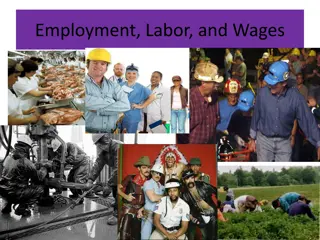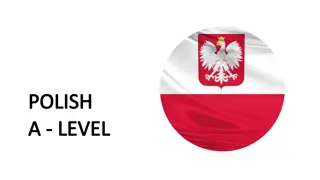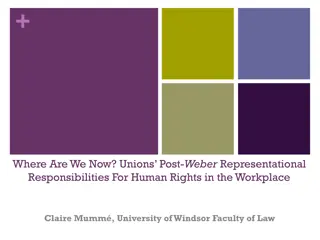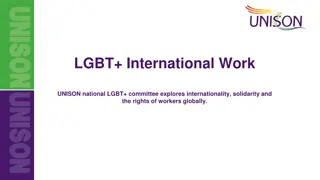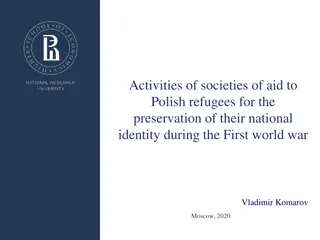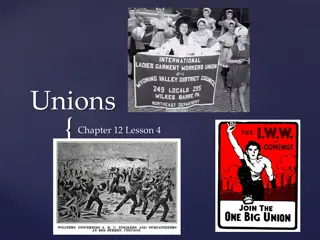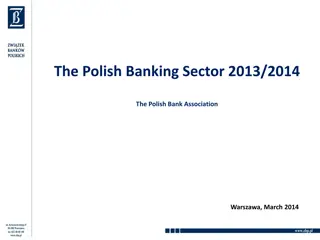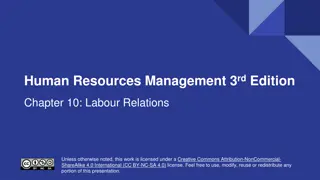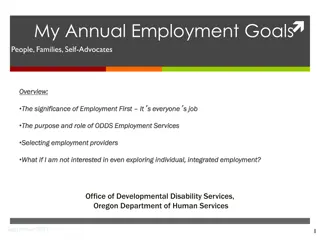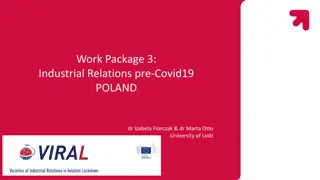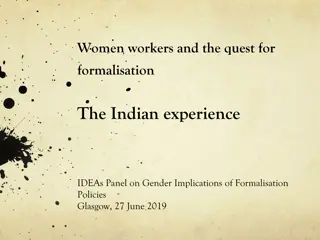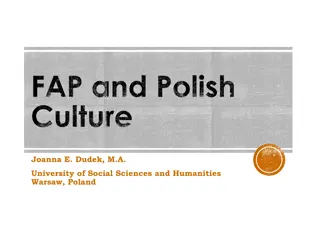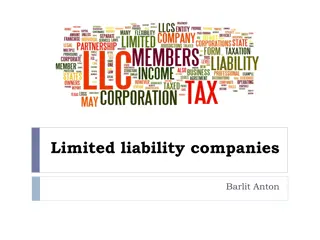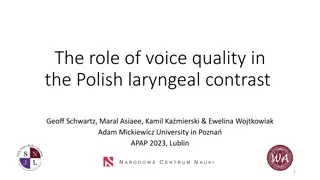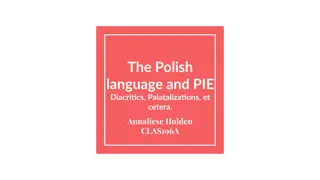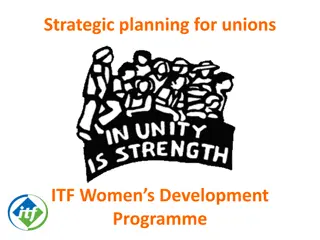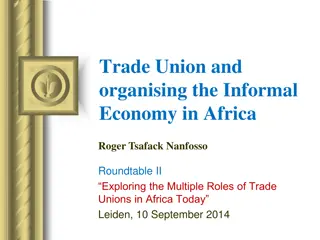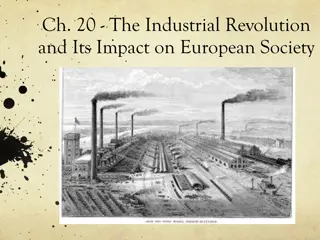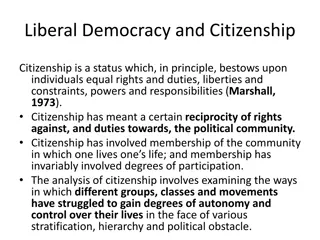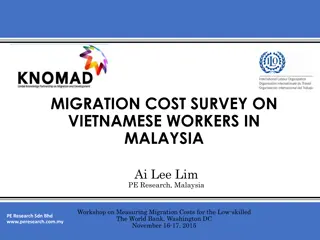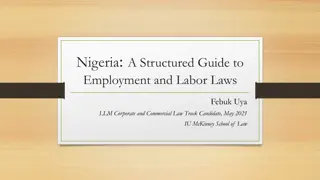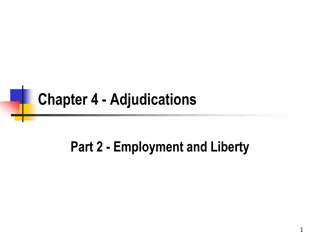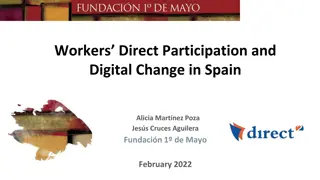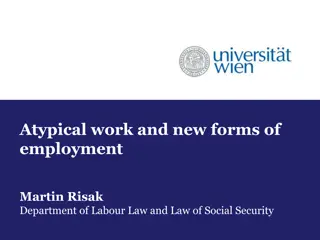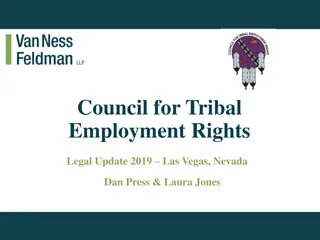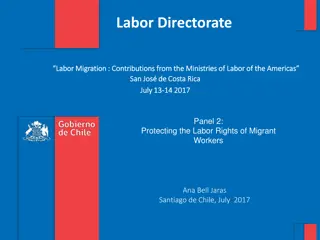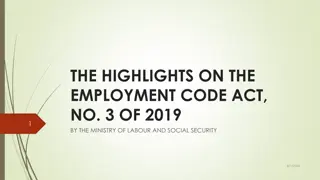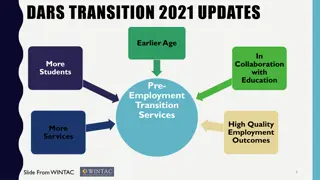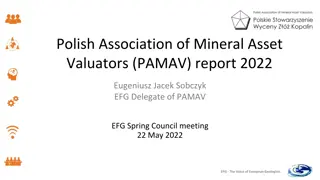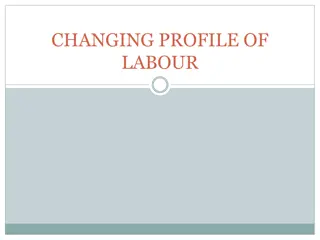Analysis of Polish Workers in the UK: Unions, Employment Rights, and Industry Participation
Explore the involvement of Polish workers in the UK labor market, their interactions with unions, and employment rights based on research data. The report covers industry distribution, occupations, agency employment trends, union comparisons between Polish and UK workers, and union density among Polish employees. Discover the nuances and differences in union participation and employment patterns within the Polish workforce in the UK.
Download Presentation

Please find below an Image/Link to download the presentation.
The content on the website is provided AS IS for your information and personal use only. It may not be sold, licensed, or shared on other websites without obtaining consent from the author. Download presentation by click this link. If you encounter any issues during the download, it is possible that the publisher has removed the file from their server.
E N D
Presentation Transcript
Polish workers in the UK Their involvement with unions and their employment rights Labour Research Department 26 November 2016
Issued to be covered Polish workers in the labour market Polish workers and unions Polish workers and their employment rights
Industry Total Poles Agriculture, forestry & fishing 1.3% 1.4% Mining & quarrying 0.2% 0.5% Manufacturing 7.8% 23.3% Electricity, gas, water and sewerage 1.0% 1.0% Construction 6.3% 9.5% Wholesale & retail trade; repair of motor vehicles 14.6% 16.0% Transport & storage 4.7% 8.4% Accommodation & food service activities 6.6% 10.1% Information & communication 4.0% 1.3% Financial, insurance and real estate activities 5.0% 1.8% Professional scientific & technical activities 8.6% 2.7% Administrative & support service activities 8.3% 7.9% Public admin & defence; compulsory social security 4.5% 0.9% Education 8.6% 3.3% Human health & social work activities 12.6% 7.8% Arts, entertainment & recreation 2.9% 1.0% Other service activities & private households 2.8% 2.8%
Occupations Polish workers All workers 3.00%5.60% 4.30% 10.30% 10.90% 6.30% 6.10% 30.60% 19.70% 7.60% 17.70% 9.30% 13.90% 10.80% 19.90% 8.10% 10.80% 4.60% Managers Professionals Assoc professionals Admin & secretarial Skilled trades Caring & other service Sales Process & plant Elementary
How employed More likely to be employed through agencies There are significantly more agency workers who are from a minority group (including Eastern Europeans) compared with all employees. BIS 2008 70% of workers supplied to meat and poultry indutry were migrant workers, with Polish being the largest nationality. EHRC 2010 More likely to be employed through gangmasters 64% came from A8 countries: with the Polish by far the most numerous (making up 87% of all A8 citizens) GLA 2008
Polish and UK unions Similarities between UK and Polish unions Membership lower in private sector Pay set at company level No works councils Differences between Polish and UK unions Only one union confederation (TUC) No social dialogue structure UK unions not founded at workplace level
Polish participation in unions Union density among all employees: 25.0% Union density among Polish employees: 8.2% Differences in part explained by industries and jobs
Polish participation in unions Polish workers are in industries and jobs where union density is lower and not where it is higher Industries 26.4% in manufacturing (union density 18.0%) 3.6% in education (union density 50.3%) 1.1% in public administration (union density 49.8%) Jobs 6.0% work as professionals (union density 43.7%) 32.7% in elementary occupations (union density15.9%)
Gap between union presence and density
Other factors explain lower density Employed as temporary workers Overall: 25.7% density for permanent but 14.5% for temporary Process workers: 23.8% density for permanent but 10.2% for temporary Other factors Language Unfamiliarity Fear of victimisation Discrimination
Unions want to organise Polish workers New unionism in 1998 - aim to develop a culture of organising that could help to transform unions by bringing in new and diverse members. New developments provided resources for this Union Modernisation Fund funds from government to help unions (ended 2010) unionlearn funds for government for training
Example of a union campaign UNISON migrant workers participation project Aims: to increase migrant workers participation in the union; to ensure that there were participating at all levels; to bring migrant workers concerns into the mainstream of bargaining at the workplace; to reduce the exclusion of migrants in the workplace; and to make the services UNISON offers more relevant to migrant workers. Ran 2008 to 2010
But remains limited and precarious Most specific campaigns ended when Union Modernisation Fund ended the UMF project gave UNISON the opportunity to do an important piece of work that otherwise would not have happened UNISON organiser 2010 Since then Continues where part of ongoing campaign Relies on new Polish officials and activists
Polish workers employment rights: background No single Labour Inspectorate (no PIP) Existing inspection and enforcement regimes being reduced switch to risk-based approach Health and Safety Executive Local authorities Gamgmasters Licensing Authority No statistics on whether rights are respected
Enforcement of employment rights through legal court cases Until 2013-14 approximately 60,000 to 70,000 cases a year in Employment Tribunals, although falling July 2013: introduction of fees 160 plus 230 if goes to court (wages, notice etc) 250 plus 950 if goes to court (unfair dismissal, discrimantion) By 2014-15 number of cases fallen to 21,900
Enforcement of employment rights Polish workers (1.6%) Pay and Work Rights Helpline (specific advice on some areas minimum wage, agency work) Polish nationals 1.1% to 1.4% of callers Acas helpline (more general employment advice) Polish language calls 0.19% ET cases (employment rights court) Up to 0.8% but probably only 0.1% to 0.13% were EU8 nationals (Barnard and Ludlow)
Conclusions on employment rights Our findings suggest that migrants rights to equal treatment in the host Member State may be rights that exist more on paper than in practice. (Barnard & Ludlow 2015) The report found widespread evidence of mistreatment and exploitation of migrant and agency workers Many workers had little knowledge of their rights and feared raising concerns would lead to dismissal. (EHRC report on meat and poultry industry 2010)
The future Unions help to secure employment rights In workplaces where unions are recognised, or have a strong presence we found that they provide a significant degree of protection for workers . EHRC But unions are likely to be weakened through Trade Union Bill Overall attitude to Polish migrants may change as a result of plans to remove in-work benefits
Thank you for your attention Lionel Fulton lfulton@lrd.org.uk
The project Solidarity in action. Employment rights, participation in social dialogue and membership in trade unions among Polish employees in the UK is co-financed by the Polish Ministry of Foreign Affairs within the Cooperation with Polish Diaspora and Poles abroad in 2015.


